TL;DR
Small retaining walls under 3–4 feet can be DIY-friendly, but they still need a compacted base, drainage, and interlock—far more than stacked concrete bags can reliably provide. Visualize safer, better-looking hardscaping design, materials, and grading in minutes with ReimagineHome.ai before you spend a dollar outside.
4 feet (1.2 m) is the typical threshold where many jurisdictions require engineered retaining walls.
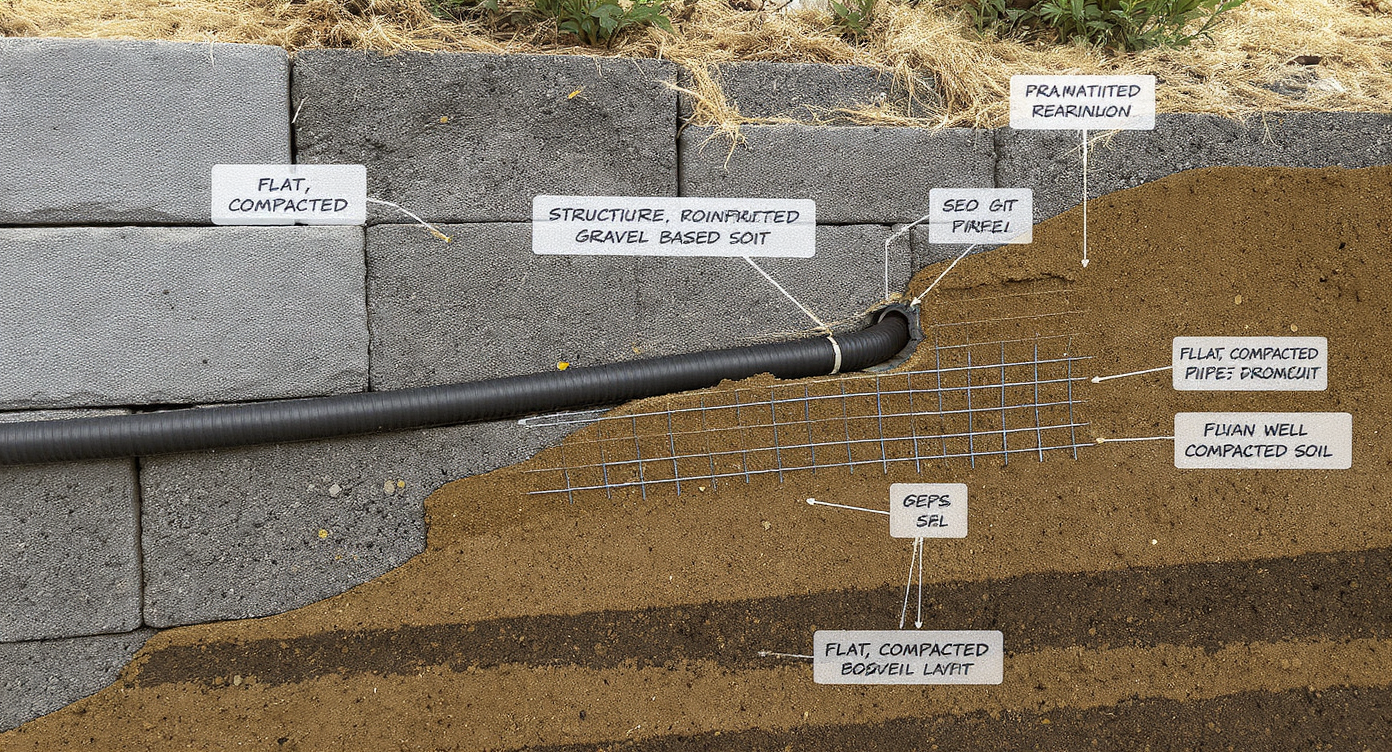
Proper retaining wall construction includes compacted base, drainage, and reinforcement to prevent damage.
Let’s talk about the backyard makeover shortcut you’ve probably seen: stack bags of premix, spray with a hose, call it a retaining wall. In reality, retaining walls are structures—tiny dams—holding back wet soil. Even if your wall is under 4 feet and classed as landscaping in many places, physics still applies. You need a flat, well-compacted base, reliable drainage, interlock or geogrid, and the right backfill. Skip those steps and you risk bowing, sliding, or frost heave within a few seasons. Try your own exterior layout instantly on ReimagineHome.ai: https://www.reimaginehome.ai/?utm_source=blog
50–70% of low-maintenance landscape budgets go to hardscaping that won’t grow, crack, or heave.
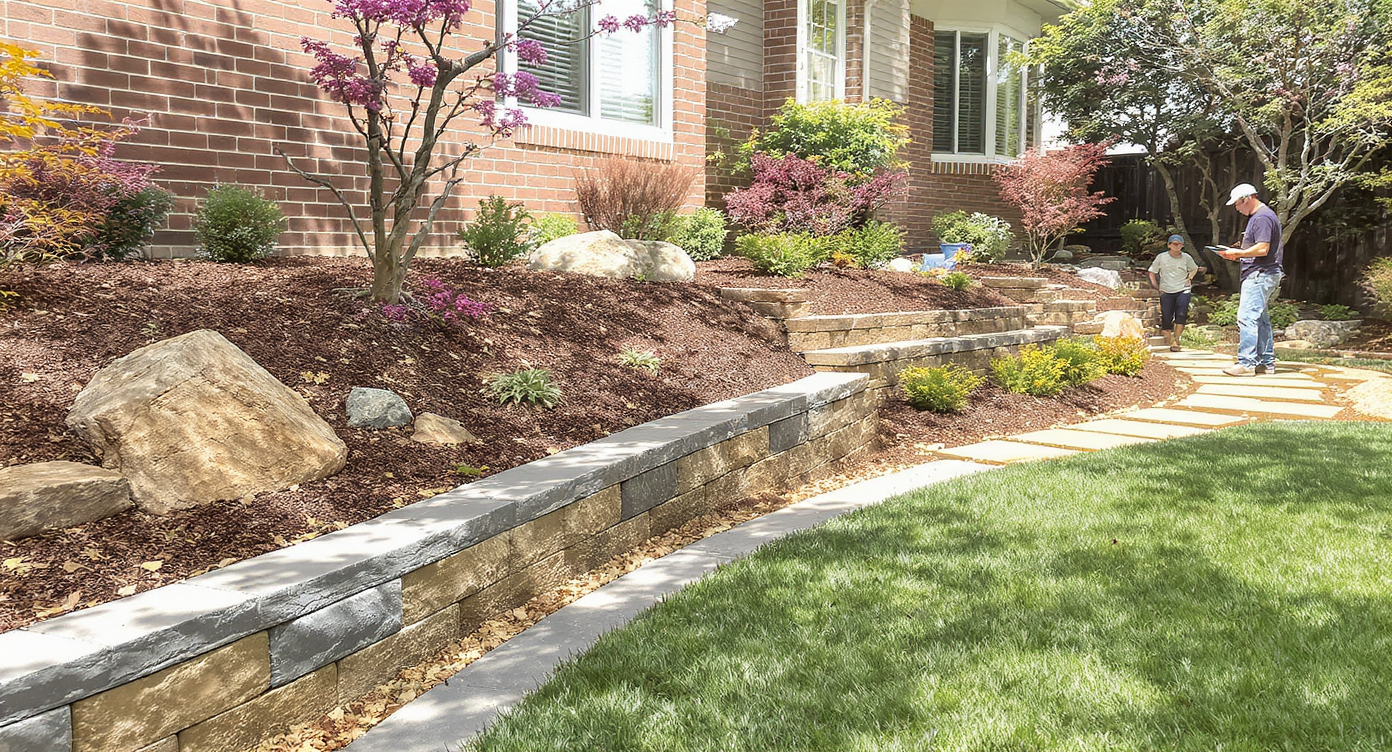
Most low-maintenance landscape budgets focus on durable hardscaping that won’t crack or heave over time.
Why pay more attention now? Climate swings and heavier storms magnify hydrostatic pressure behind walls, and homeowners want affordable landscaping ideas that still boost curb appeal. Modern landscaping ideas for small front yards favor layered planting with precise edges; hardscaping design has moved toward modular systems that manage water, not fight it. Outdoor living is year-round in many regions, which means walkways, terrace levels, and stone patio edges have to function in heat, freeze-thaw, and foot traffic. Designers also plan front yard design with the public realm in mind—if a wall sits near a sidewalk, it needs to be overbuilt for safety and longevity.
Anecdote
In a hilly neighborhood, a homeowner tried stacking premix bags to hold a garden bed. One spring thaw and the wall slumped two inches, cracking the edging. The rebuild—modular block on a compacted base with a small inward curve—survived the next three winters without a ripple.
3 materials dominate small retaining walls today: modular block, natural stone, and poured concrete.

Modular block, natural stone, and poured concrete dominate small retaining wall designs today.
Here’s what’s working—and what isn’t—right now. - Modular block (SRW): Segmental retaining wall blocks lock together with lips or pins. With a 6–8 inch compacted crushed-stone base, 12 inches of free-draining backfill, and perforated pipe, many systems reach 3–4 feet without geogrid; taller walls use geogrid layers every 2–3 courses. Curves and step-backs increase stability and look intentional. - Natural stone dry-stack: Beautiful and forgiving for garden design and modern landscaping ideas for small front yards. Dry-laid stone needs the same base and drainage rules and typically has a slight batter (setback) to resist soil pressure. - Poured concrete with veneer: Clean lines for contemporary outdoor living and pool and patio design. It demands proper footings below frost line, rebar, drains, and expansion joints, then can be faced with stone or brick for curb appeal. - Bagged concrete “sack walls”: These show up along rivers and culverts as erosion control, not true retaining. The problem for yard design is non-uniform hydration (cold joints), no real interlock, and poor drainage. Even with rebar driven through bags, you’re not solving base prep or water pressure. They can last in low-risk conditions, but appearance, code fit, and serviceability are inconsistent. Cost reality check for affordable landscaping ideas: At typical retail prices, a 66-lb premix bag “course” often pencils near $12–16 per square foot of face, while common 8×16 retaining wall blocks can land around $5–8 per square foot (regional prices vary). Add drainage rock and pipe either way—skipping it is what makes walls fail.
5 minutes is all it takes to preview a retaining wall layout in ReimagineHome.ai.
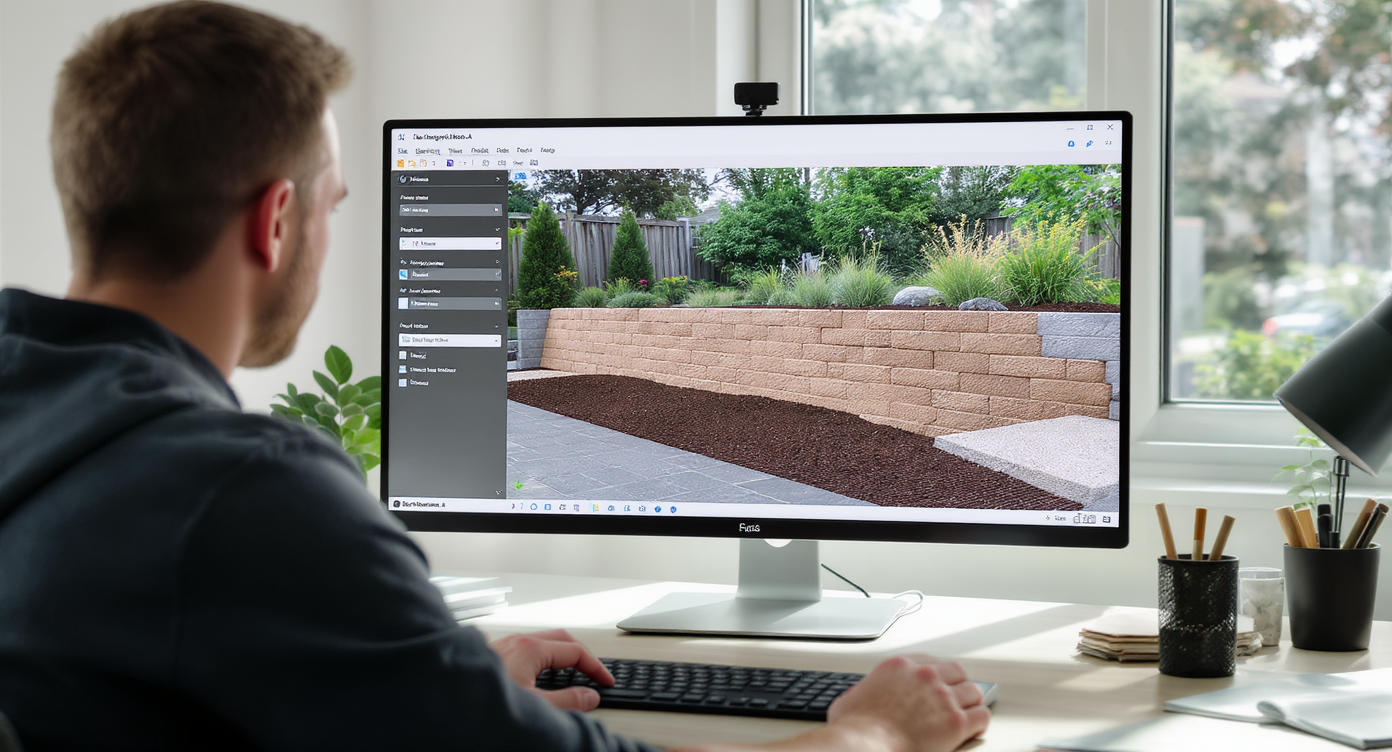
ReimagineHome.ai previews retaining wall layouts in minutes, simplifying design decisions.
ReimagineHome.ai lets you test materials, heights, slopes, and planting in a few clicks—before committing. Here’s a fast workflow that mirrors how pros iterate: - Upload a photo of your front yard or backyard and mark the grade break you want to hold. - Toggle between modular block, natural stone, or a poured-concrete look; compare textures against siding and walkway ideas for a cohesive palette. - Adjust terrace levels in 6–8 inch increments to see how many steps and landings you need for comfortable circulation (most garden paths work best at 36–48 inches wide). - Drop in a perforated drain line and gravel backfill layer visually, so you remember the hidden parts that keep the face pretty. - Add outdoor lighting design at 2700–3000 K for warm, flattering color; place path lights and wall washers to check spill and glare. - Layer privacy planting—hedges typically take 3–5 years to mature—so you can see year-one coverage versus year-five. Alt: Stone-look segmental retaining wall curving into a 42-inch-wide path with layered shrubs, visualized in ReimagineHome.ai. Caption: ReimagineHome.ai helps you test wall types, drainage zones, and planting structure side-by-side. Explore more: - Retaining wall basics in pictures: https://www.reimaginehome.ai/blogs/ideas/retaining-wall-design-basics?utm_source=blog - Outdoor lighting design for curb appeal: https://www.reimaginehome.ai/blogs/ideas/outdoor-lighting-design-guide?utm_source=blog - Best materials for a stone patio and fire pit: https://www.reimaginehome.ai/blogs/ideas/fire-pit-stone-patio-materials?utm_source=blog
3 field stories show what happens after 1, 7, and 30 years outdoors.
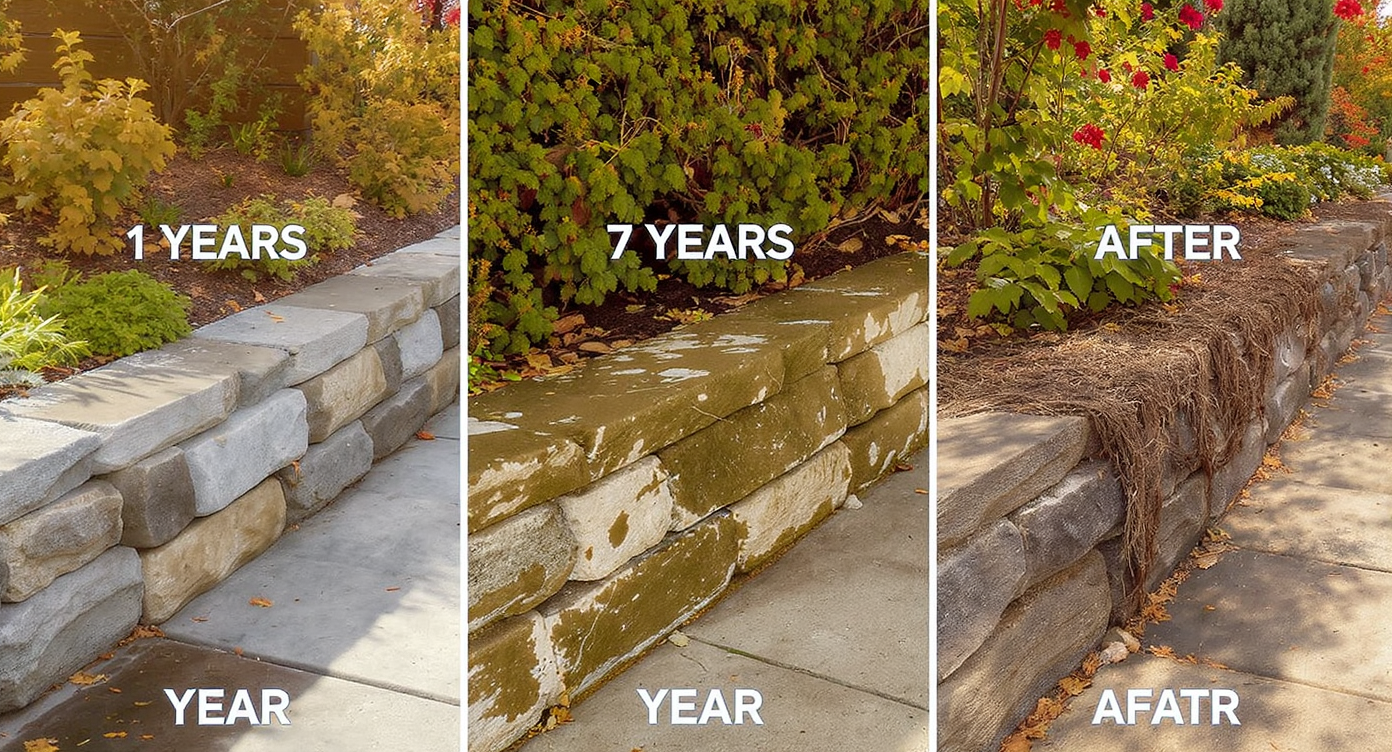
Field stories reveal retaining wall durability and landscape evolution from 1 to 30 years outdoors.
A homeowner in Los Angeles turned a narrow side yard into a cinematic, stone-edged walkway by terracing 18-inch rises into two 9-inch steps; with a 4-inch gravel base and drain, that wall still looks sharp seven years on. In central Texas, sack-placed concrete around a culvert has survived decades of flood pulses—good at resisting scour, but it was never retaining soil against a patio. In the upper Midwest, a two-foot garden wall built without drainage bowed after four winters; it sat beside a public walk, which meant an urgent, expensive rebuild with geogrid and a proper base. The lesson: context and detailing decide the lifespan.
Visualization Scenario
Upload your front yard photo to ReimagineHome.ai, sketch a 30-foot curve along the grade break, set a 24-inch height, and toggle between split-face block and dry-stack stone. Add a 42-inch path and 2700 K lights. In minutes you’ll see which option truly fits your home’s architecture and budget.
6 quick answers to retaining wall and hardscaping questions
- Are bagged-concrete retaining walls a good idea? Short answer: usually no. They’re sometimes acceptable for erosion control, but for retaining soil you want base prep, drainage, and interlocking systems. - How deep should the base be for a small retaining wall? Plan 6–8 inches of compacted, angular base gravel under the first course; go deeper in frost zones and always start on undisturbed soil. - Do I really need drainage behind a 2–3 foot wall? Yes. Install a perforated pipe at the heel of the wall, wrap in fabric, and add a 12-inch column of clean drainage rock. - What’s cheaper: blocks or bags of premix? Blocks typically win at retail; many projects price blocks near $5–8 per face square foot versus $12–16 for bag stacks, excluding base and backfill. - Can I build under 4 feet without a permit? Often yes, but local rules vary. Even if permits aren’t required, best practices don’t change—build it like it must last. - What color temperature is best for outdoor lighting on walls and paths? Aim for 2700–3000 K for warm, inviting light that flatters stone patio edges and planting.
1 free visualization can prevent years of fixes and thousands in rework.
If you remember only one thing: water wins. A well-compacted base, free-draining backfill, and real interlock or reinforcement keep small walls tidy and safe. Bagged-concrete stacks can look like a shortcut, but they rarely deliver consistent strength, drainage, or curb appeal. Use ReimagineHome.ai to pressure-test your concept, compare materials for outdoor living, and stage planting so you see the full yard design before you break ground: https://www.reimaginehome.ai/?utm_source=blog
.svg)

.svg)

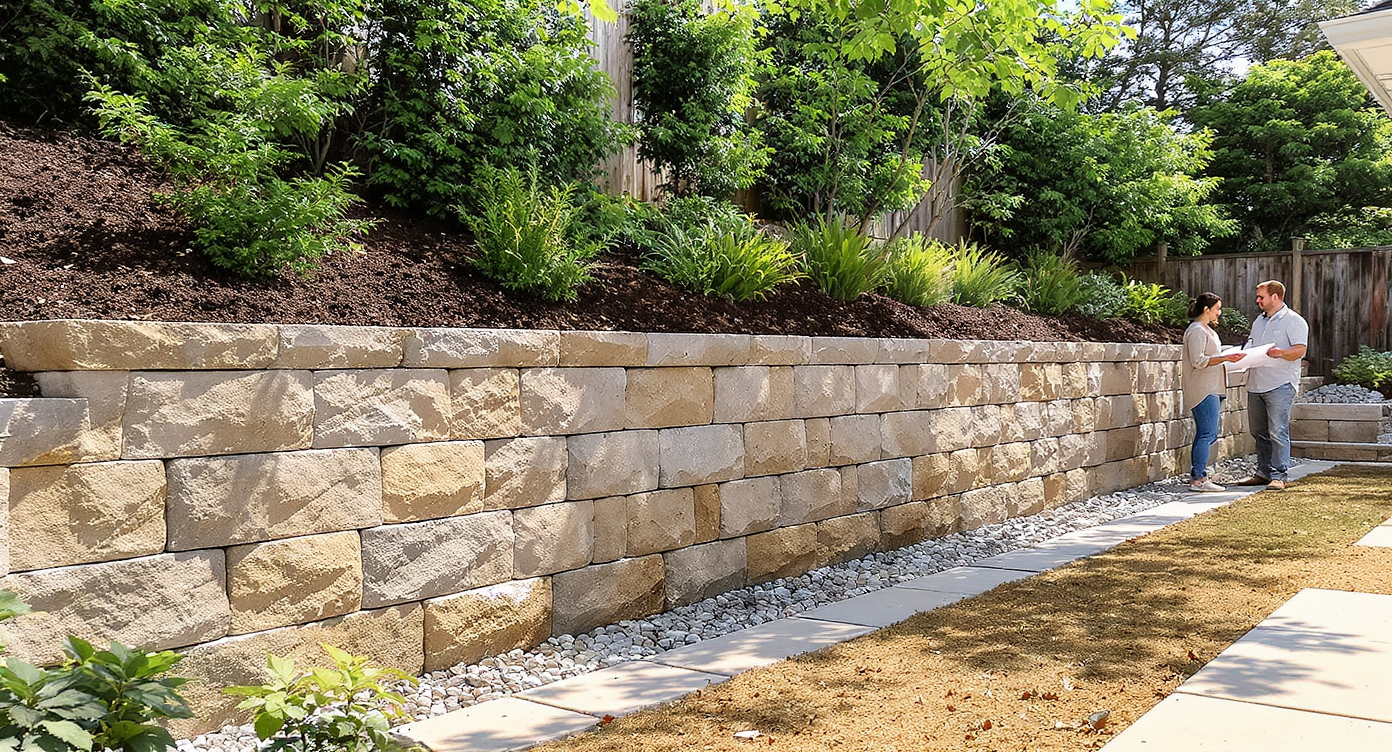




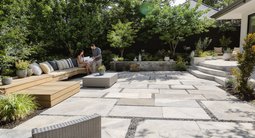


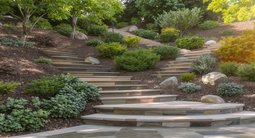
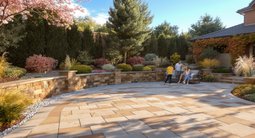


.png)